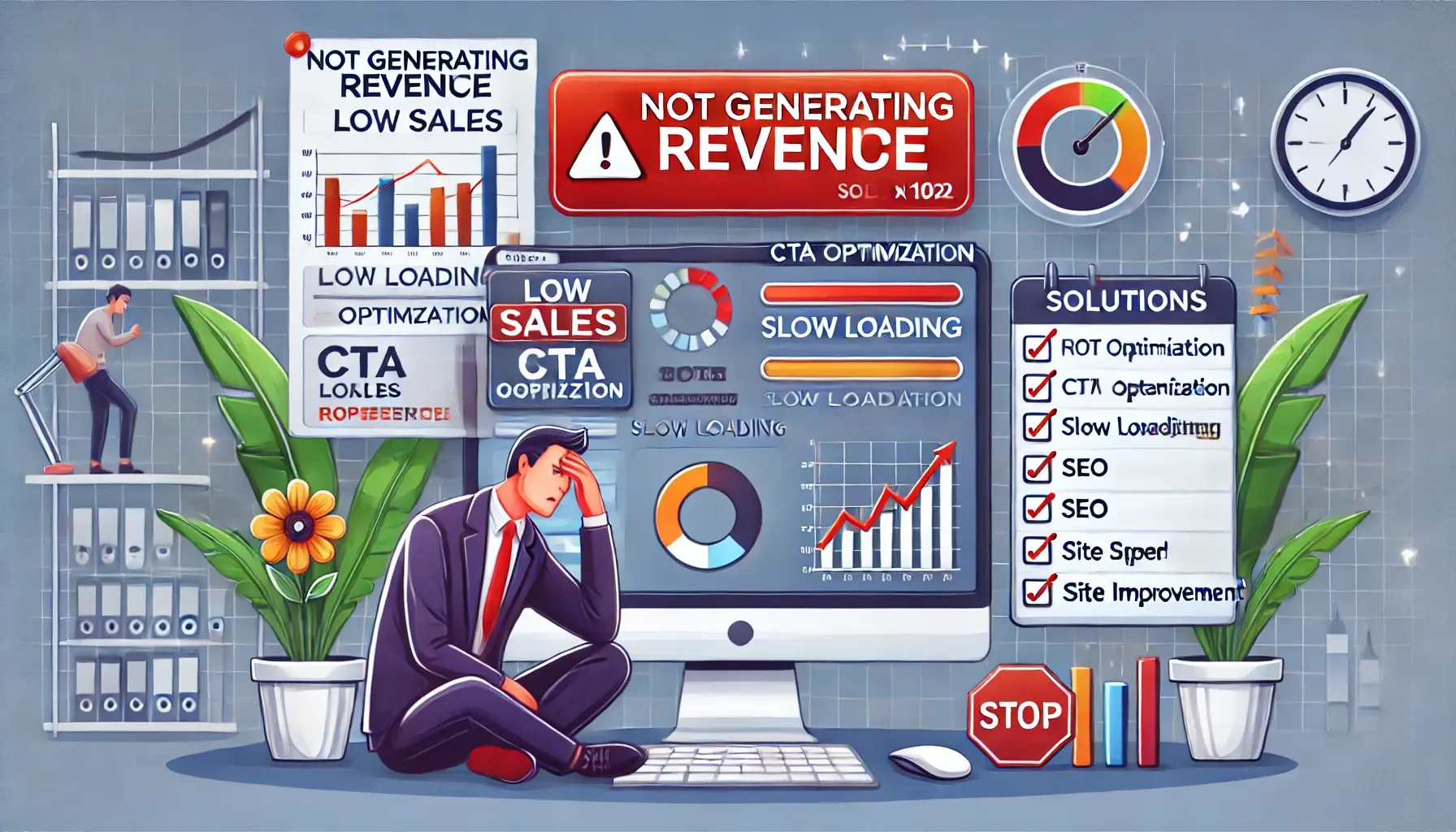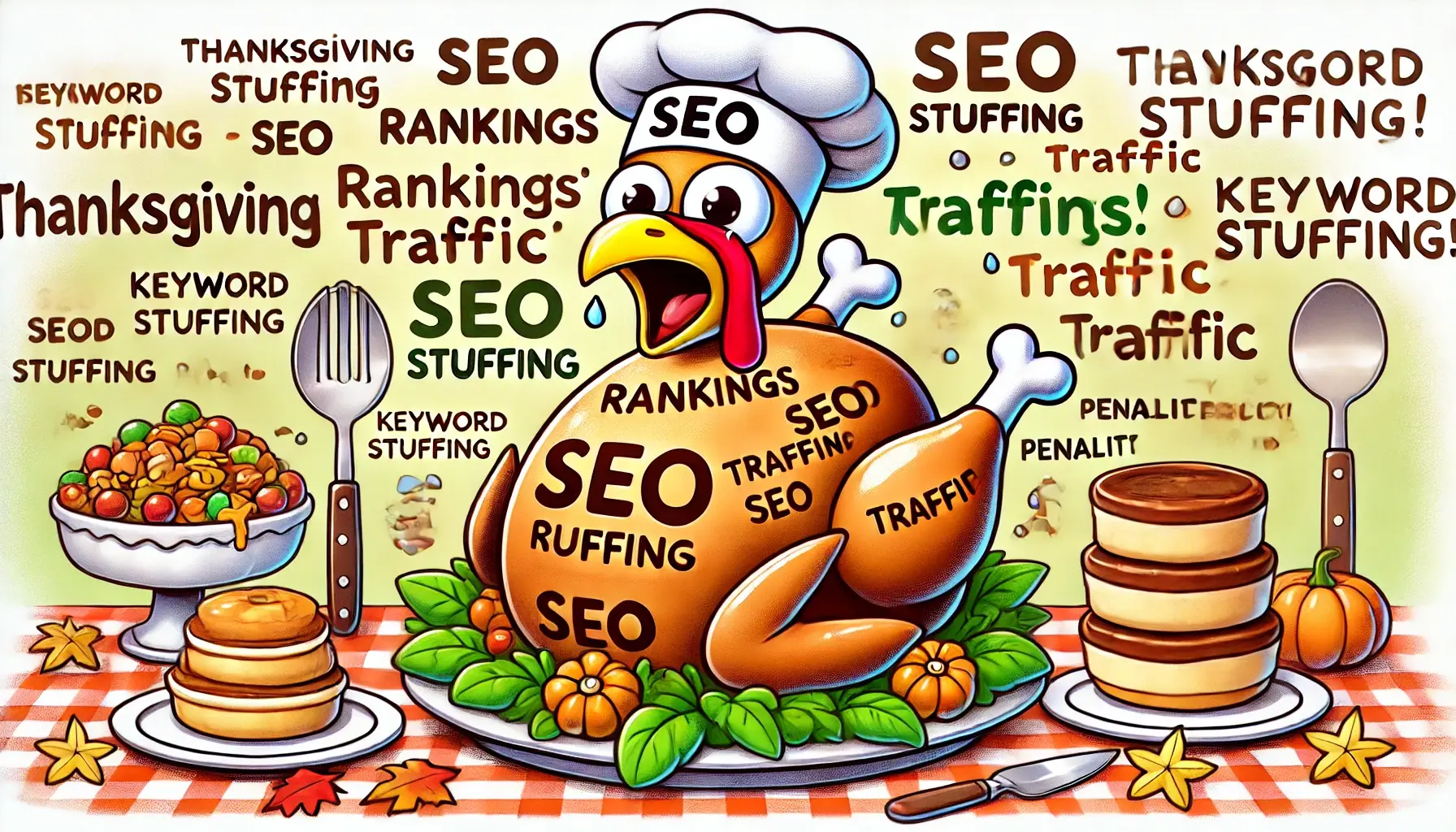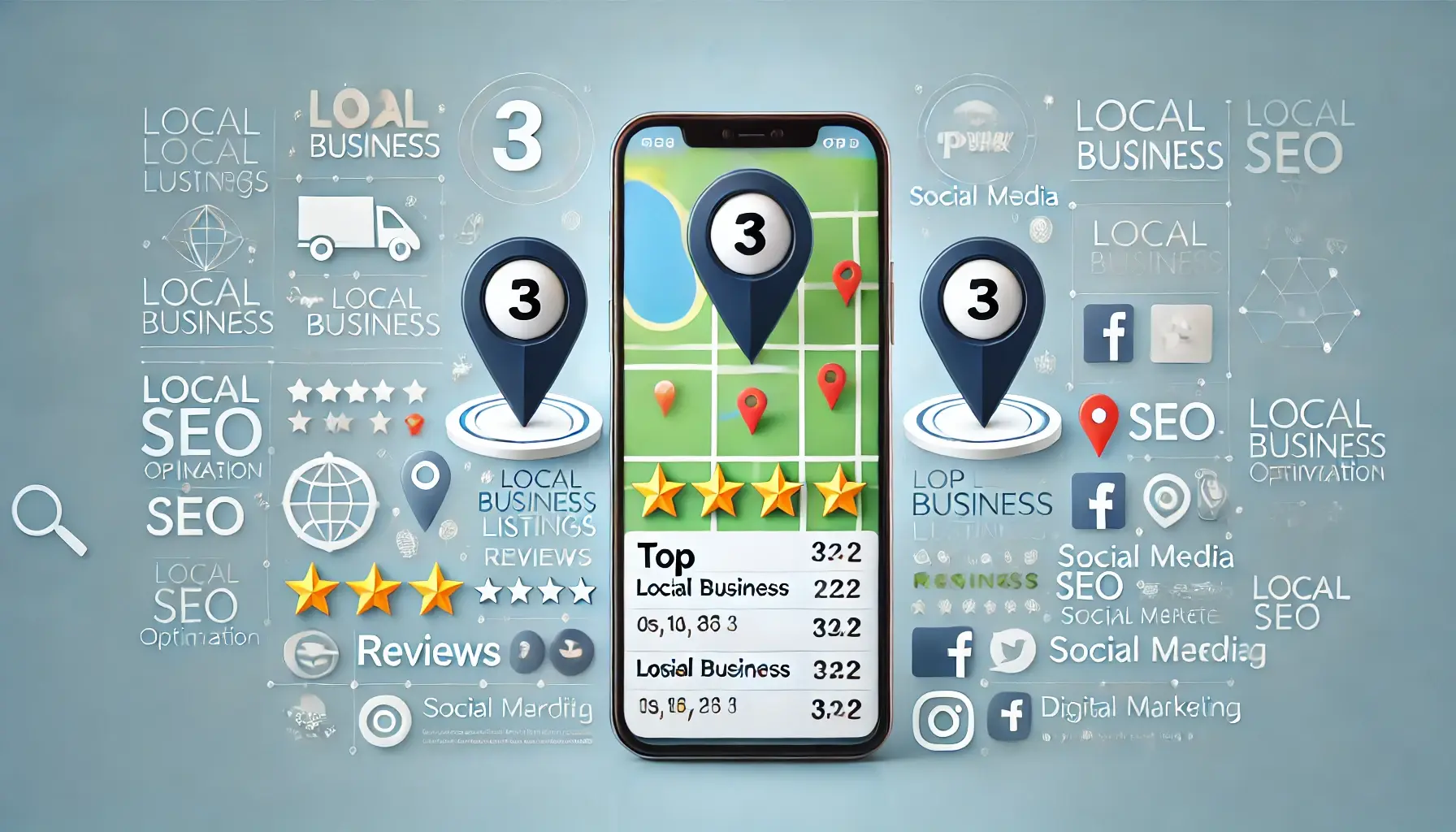
What is SEO in digital marketing?
Search engine optimization (SEO) is a crucial element of your digital marketing strategy. It helps your target audience find your business online, allowing you to expand your reach and boost revenue.
On this page, we’ll cover the basics of SEO and answer some common questions, including:
- What is SEO in digital marketing?
- How does SEO in digital marketing work?
- How do search engines work?
- What is the difference between organic search and paid search?
- How does SEO in digital marketing compare to SEM and PPC?
- What are the benefits of SEO in digital marketing?
- What are the types of SEO in digital marketing?
So, just keep reading to get all of your questions answered!
P.S. Want insider tips on SEO and digital marketing from award-winning experts? Sign up for our newsletter, Revenue Weekly, and receive expert SEO and digital marketing advice directly in your inbox for free!
What is SEO in Digital Marketing?
SEO in digital marketing is a strategy aimed at enhancing your website’s visibility in search engine results on platforms like Google. It involves using various techniques to improve your website, making it easier for both search engines and users to understand and navigate.
How Does SEO in Digital Marketing Work?
Now that we’ve defined SEO in digital marketing, let’s discuss how it operates.
When you implement an SEO strategy, you optimize your website to appear in the search engine results pages (SERPs) for keywords and phrases related to your business. This process includes submitting your website URLs to search engines like Google to ensure they are indexed and can appear in search results.
Keywords are the terms and phrases your target audience uses when searching online. For instance, if your business sells running sneakers, potential keywords might include “running sneakers” or “women’s running sneakers.”
Search engines strive to provide the best user experience, which is why they use hundreds of ranking factors to determine your position in the SERPs. Their goal is to display the most relevant and high-quality websites to users.
With SEO, you’ll apply techniques that enhance your website’s user experience and provide answers to users’ queries. Examples of these techniques include:
- Implementing responsive design to ensure your website is mobile-friendly.
- Improving website navigation to make it user-friendly.
- Creating custom content that addresses users’ questions.
- Integrating keywords and phrases throughout your site pages and content.
By implementing these SEO strategies, your website will send positive signals to search engines, indicating that it offers value to users. Consequently, search engines will rank your site higher in the SERPs.
Achieving a top position in the search results is crucial, as 75% of users don’t click past the first page of results.
How Do Search Engines Work?
Understanding the framework of SEO, which revolves around search engines, is key to knowing why certain pages appear in SERPs over others. Search engines are complex systems that analyze and organize all the information on the Internet.
So, how do search engines like Google, Bing, and Yahoo handle such vast amounts of data? They go through three steps: crawling, indexing, and ranking, to provide the best results.
The Anatomy of a Search Result
A search engine results page (SERP) includes both paid and organic results.
- Paid Results: These are websites that have paid Google to appear at the top of the search results, identified by the “sponsored” tag above the title.
- Organic Results: After the paid results, you’ll see organic results, which are websites that haven’t paid to appear. Google selects these websites based on several ranking factors such as relevance, keyword targeting, user experience, and more.
Crawling and Indexing
Search engines use special bots or crawlers to explore the Internet.
- Crawling: These bots move from URL to URL, examining the main text and supplementary parts of each page. They follow links on pages, which act as trails across the web.
- Indexing: The details collected by the bots are stored in a comprehensive index and categorized based on the title, URL, media, and text. This index is later used when someone searches for related keywords. If your website isn’t easy for crawlers to find, it might remain invisible to search engines and be left out of the index.
Ranking
The indexed content serves as candidates for searches, and further algorithms determine how well it matches search terms or keywords. Pages that are informative, reliable, and meet various other standards achieve better rankings.
Do you need help ranking higher for your industry’s keywords? Blumoo Creative has enhanced SEO for many businesses and driven high volumes of traffic to their websites. In fact, we’ve generated 24,859,684 leads in the past 5 years. Contact us online or call us at (916) 223-0367.
What is the Difference Between Organic Search and Paid Search?
Understanding SEO in digital marketing requires knowing the difference between organic search and paid search.
Organic Search vs. Paid Search:
- Organic Search: Free search results that appear based on their relevance to the search query. Improving rankings in these results is the focus of SEO.
- Paid Search: Advertisers pay to have their listings displayed at the top of search results, marked with the word “Ad.” Clicking on these results costs the advertiser money.
When you submit a search query, the results page displays both paid and organic listings. Clicking on a paid listing incurs a cost to the advertiser, while clicking on an organic listing does not.
SEO aims to improve your rankings in organic search results. While paid search is valuable, organic search often offers a higher return on investment (ROI), making SEO a smart investment for businesses. Understanding and implementing SEO can enhance your site’s rankings and traffic.
How Does SEO in Digital Marketing Compare to SEM and PPC?
In the realm of SEO, you might encounter the terms search engine marketing (SEM) and pay-per-click (PPC) advertising. Here’s how they differ from SEO:
SEO vs. SEM:
- SEO: Focuses on improving your website’s rankings in organic search results, which appear below paid ads.
- SEM: Encompasses both SEO and paid search strategies. An SEM strategy involves optimizing for organic rankings and launching paid ads that appear at the top and bottom of search results.
SEO vs. PPC:
- PPC: A digital advertising strategy involving paid ads on search engines like Google. Advertisers bid on keywords to display their ads in search results.
- SEO: Concentrates on organic (free) search results, whereas PPC focuses on the paid aspect of search engine marketing.
What are the Benefits of SEO in Digital Marketing?
SEO is a crucial strategy that can help your business grow and reach new heights. Here are some benefits:
- Boost Online Visibility: SEO increases your online visibility and brand awareness. Higher rankings in search results mean more exposure to your target audience.
- Increase Website Traffic: Higher rankings lead to more website traffic. More visitors check out your content, products, and services, boosting sales and revenue.
- Stand Out from Competitors: SEO helps you outrank competitors in search results, enhancing your credibility as an industry expert and attracting new customers.
SEO is a powerful strategy for acquiring new customers and continuously promoting your products and services online, driving more sales and revenue.
What are the Types of SEO in Digital Marketing?
Before implementing an SEO strategy, it’s essential to understand the different types of SEO, also known as the pillars of SEO.
Here are the four types of SEO in digital marketing:
- On-page SEO
- Off-page SEO
- Technical SEO
- Content
1. On-page SEO
What is on-page SEO? On-page SEO involves making optimizations directly on your website to enhance your SEO. The goal of on-page SEO is to ensure your website is user-friendly and provides valuable information that answers users' questions and solves their problems.
Key Elements of On-page SEO:
- Keywords: Choose relevant keywords and incorporate them naturally into your content.
- URLs: Create clear, concise, and keyword-rich URLs.
- Title Tags: Optimize title tags to clearly indicate the topic of your page.
- Header Tags: Use header tags (H1, H2, H3) to organize content and make it easier to read.
- Meta Descriptions: Write compelling meta descriptions to describe your page content accurately.
Optimizing these elements helps search engines and users better understand your website, which can lead to higher rankings and more clicks.
2. Off-page SEO
What is off-page SEO? Off-page SEO focuses on activities outside of your website to improve its authority and relevance. Although domain authority is not a direct Google ranking factor, building a site with valuable content that others link to can boost your rankings.
Key Strategies for Off-page SEO:
- Earning Links: Obtain links from other reputable websites.
- Social Media Shares: Promote your content on social media platforms.
- Influencer Outreach: Connect with influencers to share your content.
- Guest Blogging: Write content for other websites to gain exposure.
Building authority through these strategies helps establish your business as an expert in your field, enhancing your online reputation and search rankings.
3. Technical SEO
What is technical SEO? Technical SEO involves optimizing the backend of your website to make it easy for search engine crawlers and users to navigate and understand. This helps search engines index your pages effectively for future searches.
Key Elements of Technical SEO:
- Page Load Speed: Ensure your website loads quickly.
- Mobile-Friendliness: Optimize your site for mobile users.
- Navigation: Improve website navigation for ease of use.
By focusing on these technical aspects, you can enhance user experience and improve your site’s rankings in search results.
4. Content
What is content SEO? Content is the core of your website, providing essential information about your business, products, and services. High-quality content is crucial for engaging users and improving your SEO.
Types of Content to Create:
- Blog Posts: Regularly updated blog posts with relevant information.
- Informative Articles: Detailed articles that provide value to your audience.
- Guides: Comprehensive guides on specific topics.
- Videos: Engaging video content.
- Infographics: Visual content that simplifies complex information.
Creating valuable content allows you to incorporate high-value keywords, increasing your chances of ranking higher in search results. Content works in tandem with your SEO strategy to attract more users and drive sales and revenue for your business.
Check Your Website’s SEO Performance for Free with Blumoo Creative's Site Grader
Do you want to check your website’s current SEO performance for free? You will get an comprehensive report on your site's performance in several key areas, including: Page loading speed, Security measures, Search engine optimization (SEO), Mobile responsiveness, and User experience (UX).
Simply enter your website URL and click enter to check your site’s SEP performance on search engines like Google in seconds!






















